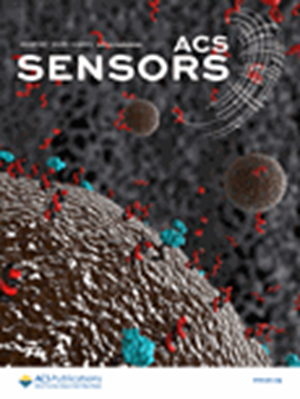儿童群体样本中童年不良经历的流行率
IF 8.2
1区 化学
Q1 CHEMISTRY, ANALYTICAL
引用次数: 0
摘要
重要性18岁之前暴露于不良童年经历(ACE)是造成全球疾病和残疾负担的主要原因之一。目的对来自18岁或以下儿童样本的数据进行元分析,以估算ACE的平均流行率,确定与较高或较低ACE暴露相关的特征和环境,并探讨可能影响这些流行率估算的方法学因素。设计、环境和参与者从MEDLINE、PsycINFO、CINHAL和Embase中检索1998年1月1日至2024年2月19日期间发表的研究。纳入标准要求研究使用 8 项或 10 项 ACE 问卷(加减 2 项)报告 0、1、2、3 或 4 项或更多 ACE 的发生率,包含 18 岁或以下儿童人群样本,并以英语发表。我们从 65 项研究中提取了数据,并采用多类别患病率荟萃分析法对这些数据进行了综合分析,这些研究代表了来自 18 个国家的 490 423 名儿童。这些数据的分析时间为 2024 年 2 月 20 日至 2024 年 5 月 17 日。主要结果和测量ACEs.Results 各项研究中儿童的平均年龄为 11.9(SD,4.3)岁,样本的年龄范围为 0 至 18 岁,50.5% 为女性。据估计,0 次 ACE 的平均患病率为 42.3%(95% CI,25.3%-52.7%),1 次 ACE 的患病率为 22.0%(95% CI,9.9%-32.7%),2 次 ACE 的患病率为 12.7%(95% CI,3.8%-22.3%),3 次 ACE 的患病率为 8.1%(95% CI,1.4%-16.8%),4 次或更多次 ACE 的患病率为 14.8%(95% CI,5.1%-24.8%)。青少年与儿童(患病率比为 1.16;95% CI,1.04-1.30)、接受寄宿照料的儿童(1.26;95% CI,1.10-1.43)、有青少年犯罪史的儿童(1.26;95% CI,1.04-1.30)相比,4 种或更多 ACE 的患病率更高。43)、有青少年犯罪史(95% CI,1.29;1.24-1.34)、土著居民(1.63;95% CI,1.28-2.08)以及以档案审查为主要评估方法的研究(1.29;95% CI,1.23-1.34)。结论在本研究中,ACE 在儿童中普遍存在,但不同参与者的人口特征和背景之间存在显著差异。作为儿童和青少年福祉的主要先发威胁,ACE 可影响其日后的生活前景,是一个紧迫的全球性社会问题。有效的早期识别和预防策略,包括有针对性的编码设计社区干预措施,可以降低 ACE 的流行率,减轻其严重影响,从而最大限度地减少童年逆境对后代健康的有害影响。本文章由计算机程序翻译,如有差异,请以英文原文为准。
Prevalence of Adverse Childhood Experiences in Child Population Samples
ImportanceExposure to adverse childhood experiences (ACEs) before the age of 18 years is a major contributor to the global burden of disease and disability.ObjectiveTo meta-analyze data from samples with children 18 years or younger to estimate the average prevalence of ACEs, identify characteristics and contexts associated with higher or lower ACE exposure, and explore methodological factors that might influence these prevalence estimates.Design, Setting, and ParticipantsStudies that were published between January 1, 1998 and February 19, 2024, were sourced from MEDLINE, PsycINFO, CINHAL, and Embase. Inclusion criteria required studies to report the prevalence of 0, 1, 2, 3, or 4 or more ACEs using an 8- or 10-item ACEs questionnaire (plus or minus 2 items), include population samples of children 18 years or younger, and be published in English. Data from 65 studies, representing 490 423 children from 18 countries, were extracted and synthesized using a multicategory prevalence meta-analysis. These data were analyzed from February 20, 2024, through May 17, 2024.Main Outcomes and MeasuresACEs.ResultsThe mean age of children across studies was 11.9 (SD, 4.3) years, the age range across samples was 0 to 18 years, and 50.5% were female. The estimated mean prevalences were 42.3% for 0 ACEs (95% CI, 25.3%-52.7%), 22.0% for 1 ACE (95% CI, 9.9%-32.7%), 12.7% for 2 ACEs (95% CI, 3.8%-22.3%), 8.1% for 3 ACEs (95% CI, 1.4%-16.8%), and 14.8% for 4 or more ACEs (95% CI, 5.1%-24.8%). The prevalence of 4 or more ACEs was higher among adolescents vs children (prevalence ratio, 1.16; 95% CI, 1.04-1.30), children in residential care (1.26; 95% CI, 1.10-1.43), with a history of juvenile offending (95% CI, 1.29; 1.24-1.34), and in Indigenous peoples (1.63; 95% CI, 1.28-2.08), as well as in studies where file review was the primary assessment method (1.29; 95% CI, 1.23-1.34). The prevalence of 0 ACEs was lower in questionnaire-based studies where children vs parents were informants (0.85; 95% CI, 0.80-0.90).ConclusionsIn this study, ACEs were prevalent among children with notable disparities across participant demographic characteristics and contexts. As principal antecedent threats to child and adolescent well-being that can affect later life prospects, ACEs represent a pressing global social issue. Effective early identification and prevention strategies, including targeted codesigned community interventions, can reduce the prevalence of ACEs and mitigate their severe effects, thereby minimizing the harmful health consequences of childhood adversity in future generations.
求助全文
通过发布文献求助,成功后即可免费获取论文全文。
去求助
来源期刊

ACS Sensors
Chemical Engineering-Bioengineering
CiteScore
14.50
自引率
3.40%
发文量
372
期刊介绍:
ACS Sensors is a peer-reviewed research journal that focuses on the dissemination of new and original knowledge in the field of sensor science, particularly those that selectively sense chemical or biological species or processes. The journal covers a broad range of topics, including but not limited to biosensors, chemical sensors, gas sensors, intracellular sensors, single molecule sensors, cell chips, and microfluidic devices. It aims to publish articles that address conceptual advances in sensing technology applicable to various types of analytes or application papers that report on the use of existing sensing concepts in new ways or for new analytes.
 求助内容:
求助内容: 应助结果提醒方式:
应助结果提醒方式:


